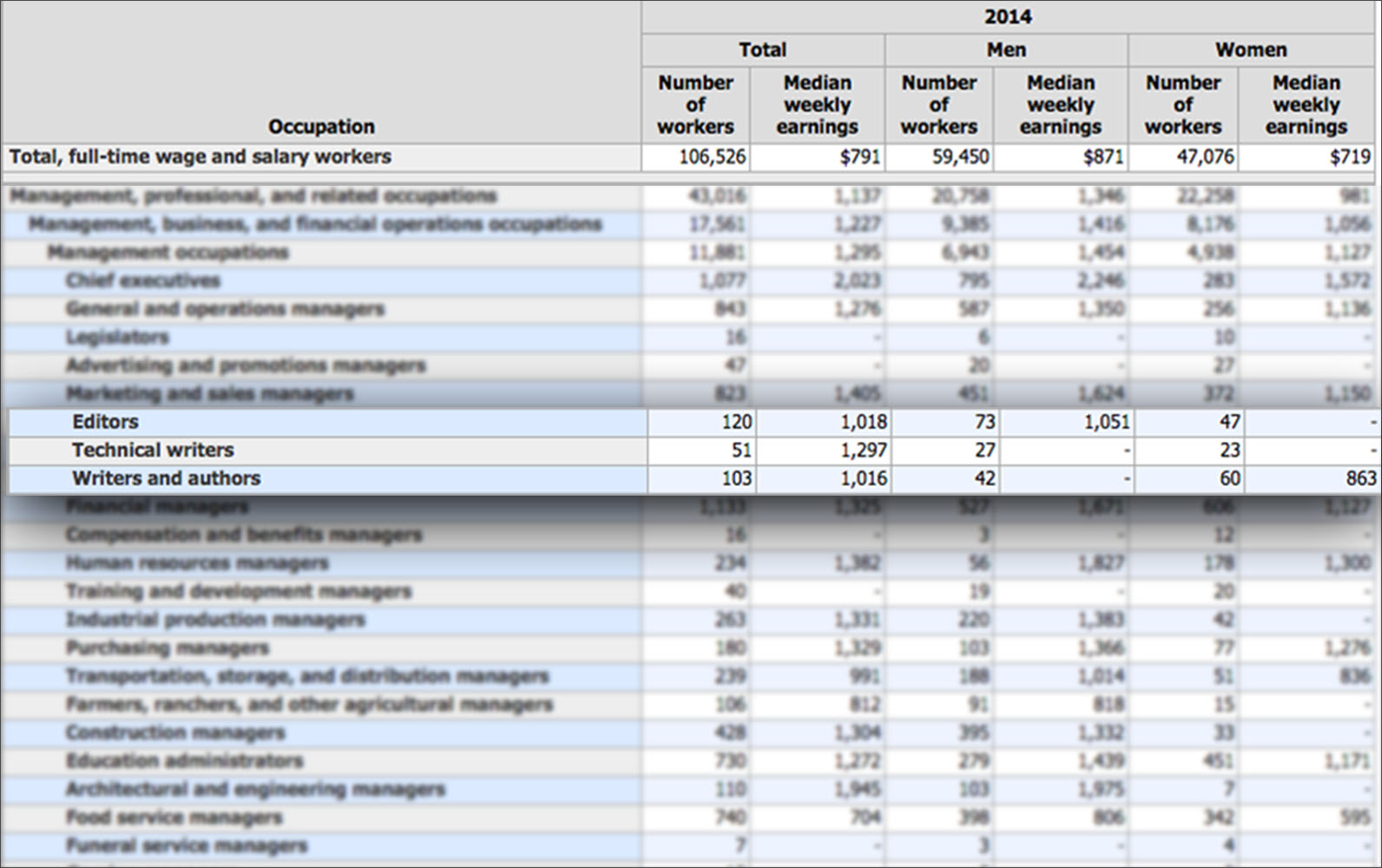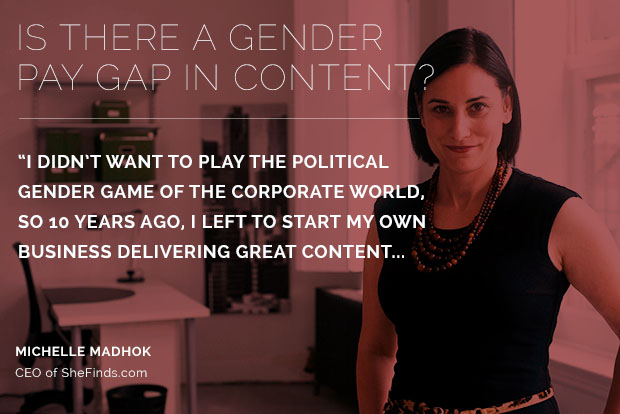Hollywood has produced some riveting tales of the gender pay gap this year, and we’ve listened, commented and debated these nonfiction monologues. First was Patricia Arquette’s Oscar acceptance speech, and more recently, Jennifer Lawrence wrote about the Sony leak that exposed the company’s pay gap in an essay for Lena Dunham’s Lenny Letter. Both stories left me with two questions.
One, the rhetorical, Why does it take a Hollywood star (or a presidential debate, for that matter) to get us talking about this long-standing issue? And even with the chatter from these influencers, is the core issue still overlooked? Janell Ross, a writer for The Washington Post’s “The Fix,” pointed out that as people were busy comparing Lawrence’s comments and actions on the gender pay gap with those of Hillary Clinton’s, “Latina Equal Pay Day came and went.”
Second: If the creatives of film and television experience the gap, what about women in content? Depending on the study you read, women earn an average of 79 to 82 cents to every dollar their male counterparts earn. Are women in content, at every stage and level, any different?
The marketing gap
The well-quoted 79 percent statistic changes — sometimes subtly, other times drastically — based on age, location and industry, among other factors. So where do the women in content marketing fall?
The data is lacking. The U.S. Bureau of Labor Statistics lists writer, editor and technical writer as occupations, but exact figures for weekly pay by gender are absent. The bureau cites a lack of data or data that did not meet publication standards as the problem.

So what if we move up to a wider bucket, marketing? The news isn’t favorable. Marketing manager is one of the 20 jobs with the biggest gender pay gap, according to the number crunchers over at Fortune. The wage gap for this role is 70.8 percent. Not a win for women in the space, for sure, but also not an exact picture of the situation of women in content.
Women dominate the content space — or do they?
First let’s head to the content classroom, where women seemingly rule. Almost two-thirds of the students enrolled in journalism and mass communication bachelor’s and master’s degree programs are female, according to the 2013 Survey of Journalism and Mass Communication Enrollment.
On the flip side, Women’s Media Center reports that 63 percent of bylines in print, on wires and online belong to men. With so many women educated in the field, why the gap?
For one, the above byline stat only accounts for content at the 20 most widely circulated, read and viewed outlets. Does this mean men are getting more of the high-paying, high-profile creation gigs? Perhaps, but once you consider blogging, the story seems to develop a new headline.
Women hold their own as influencers
Many experts attribute the overall 79 percent gap to women self-selecting into lower-paying jobs. This argument, while worth my ire, is not worth my prose here.

— and in particular, using social for blogging — compared to men for several years now, according to Nielsen data. Self-publishing has enabled, quite literally, girl power to power a blogger/influencer market, where women set their own rates.
Michelle Madhok, CEO of SheFinds.com and online shopping influencer, is a good real-life example of this. “I didn’t want to play the political gender game of the corporate world, so 10 years ago, I left,” Madhok said. “Things may have changed ‘out there,’ but I doubt it, and I’m not going back to find out. With SheFinds, I’m creating a great place for smart women to thrive.”
Are freelance negotiations causing a gap?
In the Lenny essay, Lawrence addressed why she didn’t negotiate for more money for her roles in big franchise films: “I would be lying if I didn’t say there was an element of wanting to be liked that influenced my decision to close the deal without a real fight. I didn’t want to seem ‘difficult’ or ‘spoiled.’ At the time, that seemed like a fine idea, until I saw the payroll on the Internet and realized every man I was working with definitely didn’t worry about being ‘difficult’ or ‘spoiled.'”
Are we socially conditioned to settle for less? Lawrence added that youth or personality could be a factor, but “based on the statistics, I don’t think I’m the only woman with this issue.”
In an industry based largely on negotiated rates, I had to wonder if this fear of being considered an abrasive b**ch is a problem. So we asked a few freelancers. The responses are promising, but we know they aren’t all-encompassing. Here’s what they said:
“I think a lot of women fail to negotiate and just take what they’re offered. However, women working as freelance content creators have no real limit to how much they can make, except themselves… I don’t know that any gap in income is gender-related when you’re an independent contractor. More likely it’s a result of the writer or content creator not knowing the market, undervaluing herself and not proposing the rate she deserves.”
– Kimberlee Morrison, freelance writer and editor in business, technology, entrepreneurship and social media; regular contributor to AdWeek’s SocialTimes
“I’ve found rates are set by things other than the writer’s gender. Experience, references, professionalism and creativity all seem to matter more than gender. At least, that’s been my experience.”
– Gina Roberts-Grey, health and celebrity freelance writer; published in Family Circle, Glamour, Essence, Oprah, Prevention and MSN
“I’ve never felt discriminated against as a freelancer… Now, if we were discussing the wages of full-time women writers in sports, I would have a different opinion.” And that’s when she requested anonymity: “I’m afraid if I speak my mind, I won’t get hired in the future, so I guess I fall in line with exactly what Jennifer Lawrence discussed. Ha.”
– An anonymous female influencer in sports
“Having worked primarily in parenting spheres for quite a while, I haven’t experienced a gender pay gap in content. That being said, I believe technical topics that could be perceived as masculine have a tendency to command a higher rate — even if the amount of research and experienced involved is comparable. That being said, I believe social gender conditioning factors into women — especially working moms — asking for less out of fear of not getting work or as being perceived as grabby or whiny.”
– Maria Mora, freelance writer



